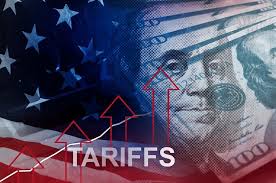US tariffs threaten to more severely hit German export centres: CBREIM

US TARIFFS THREATEN TO MORE SEVERELY HIT GERMAN EXPORT CENTRES: CBREIM
US trade tariffs threaten to more severely affect export gateways in Germany—cities like Hamburg with large seaports that serve as key logistics hubs, according to CBRE Investment Management (CBREIM). These markets were already affected by stalled prime rent growth over the last few quarters.
Supply chains will only be affected by a reduction in trade to the United States (currently accounting for 10 per cent of Germany’s total exports), but not by the remaining 90 per cent of exports to other markets.
Europe makes up around 67 per cent of Germany’s exports, with Asia accounting for 16 per cent—both larger than the United States, and, therefore, provide potential upside to any rebalancing in trading partners and supply chains, should that occur in the future, CBREIM said in a note.
While port cities like Hamburg and Bremen are more closely linked to global export markets, others such as Berlin and the Ruhr region are less exposed due to strong domestic demand, which is also reflected in the recent strength of prime rent growth in those cities relative to other submarkets, it noted.
Berlin’s growing and diverse domestic consumer base makes it less dependent on international trade compared to manufacturing-heavy cities and industrial hubs like Stuttgart or Wolfsburg.
The Ruhr region has benefitted from strong infrastructure including excellent connectivity via motorways and rail, increasing its strength as a last mile logistics market.
CBREIM has made an upward revision of 40 basis points to Germany’s five-year gross domestic product (GDP) forecast. Most of this growth is expected to be front-loaded, with strong growth in 2026 before stabilising thereafter.
The start of 2025 marked an interesting shift for the German economy as it welcomed a new government, shifted policy gears with reforms to the historic debt brake and brought in expansionary fiscal policy.
The new German government’s expansionary fiscal policy, promising to invest significantly in infrastructure and climate protection, should also help to revive and rebalance its growth prospects in the medium term, CBREIM remarked.
Its risk analysis showed that the greatest risks from US tariffs affected specific sectors rather than the economy as a whole. Industries like automobiles and pharmaceuticals will experience greater risk due to their dependency on US exports, as opposed to other sectors.
The United States is just one of Germany’s trading partners. Germany’s exports to both Europe and Asia are higher than to the United States and potential exists for the trading ties to these higher share regions to expand.
In the new geopolitical environment, Germany is expected to perform well given the changes in government fiscal policy, growing trading partner optionality and submarket strengths, CBREIM added.
By Fibre2Fashion
